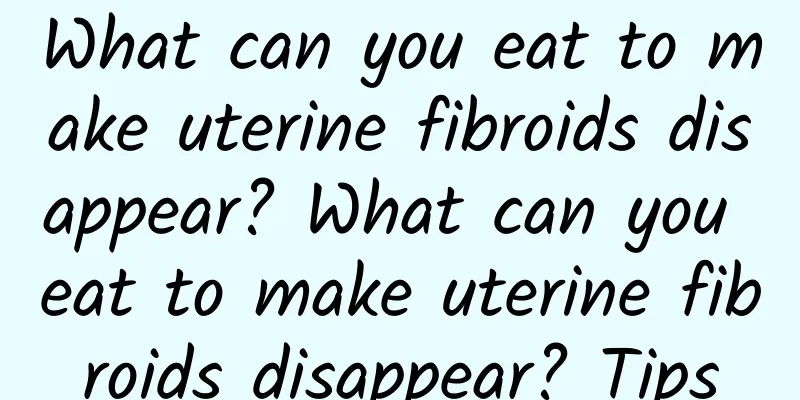Bright red blood on the third day of miscarriage

|
Bright red blood on the third day of miscarriage Vaginal bleeding on the third day after abortion is bright red. It may be caused by residual uterine cavity, long-term immobility or unrepaired endometrium. If the amount of bleeding is not much and there are no other conditions, you can observe it first. If the amount of bleeding is heavy and the menstrual volume exceeds normal, you must go to the hospital for examination, understand the condition of the uterine cavity in time, and treat the symptoms. Common causes and solutions: 1. Uterine cavity residue: There are tissues, decidua or fetal sac in the uterine cavity that are not completely scraped clean, resulting in vaginal bleeding with bright red color. You can take some drugs that promote blood circulation and eliminate blood stasis to promote the discharge of uterine cavity residues, such as new biochemical particles. If there are too many residues and the drugs cannot relieve them, you need to go to the hospital for curettage in time; 2. Lying in bed for a long time: If you stay in bed for a long time after a miscarriage without proper ground activities, the blood in the uterine cavity will flow out due to gravity. This is a normal phenomenon. If there is a lot of bleeding, you need to see a doctor to stop the bleeding; 3. The endometrium is not repaired: Abortion surgery stimulates the endometrium, so it cannot recover in time. It is recommended to observe first and take appropriate drugs such as motherwort to promote uterine contraction. If bleeding lasts for more than five days, you need to go to the hospital for examination. Note: 1. Appropriate activities: Appropriate activities in bed after abortion are necessary to facilitate the discharge of uterine congestion; 2. Diet adjustment: Avoid eating raw, cold, spicy and irritating foods, as spicy and irritating foods may promote blood circulation and increase bleeding; 3. Keep clean: Pay attention to local hygiene and clean the perineum 1-3 times a day to prevent external bacteria from entering the human body and causing infection. Change sanitary napkins in time and avoid sexual intercourse within one month. |
<<: How to deal with menstrual cramps
>>: How to treat multiple ovarian cysts? Can you get pregnant?
Recommend
Physical therapy for cervical erosion
Physical therapy for cervical erosion: Cervical e...
Common clinical examination methods for chronic cervicitis
Chronic cervicitis is a gynecological disease tha...
What to do with vaginitis during pregnancy? Here are 8 tips to prevent it!
How to prevent vaginitis during pregnancy? Due to...
A brief analysis of the factors affecting the price of abortion surgery
Women who want to have an abortion should want to...
Lose weight on your arms while doing housework! 3 steps to easily eliminate butterfly sleeves and clean windows
The weather is so hot that you really want to wea...
Advantages and disadvantages of traditional Chinese and western medicine in treating vulvar leukoplakia
As a common gynecological disease, the treatment ...
What are the early symptoms of cervical inflammation in women? 4 early symptoms of cervical inflammation in women
I don’t know how much we all know about the early...
Why do we need to do curettage for adenomyoma? How to treat adenomyoma?
Why do I need to do a curettage for adenomyoma? A...
Comparison of the main causes of clinical pelvic inflammatory disease
The cause of pelvic inflammatory disease is relat...
Seven types of amenorrhea
The causes of amenorrhea are very complex, includ...
Detailed analysis of some of the hazards of vaginitis
Vaginitis is the most common gynecological diseas...
Angelica Medicinal Diet Suitable for Patients with Dysmenorrhea
Diet therapy is very effective in treating dysmen...
Supermodel Gisele Bundchen practices yoga to maintain her S-curve
Gisele Bundchen has been named the world's ri...
Clinical symptoms of cervical polyps
Cervical polyps are a manifestation of chronic ce...
What are the dangers of cervical erosion? Is there any relationship between cervical erosion and sexual life?
The cervix is divided into the inner and outer ...









